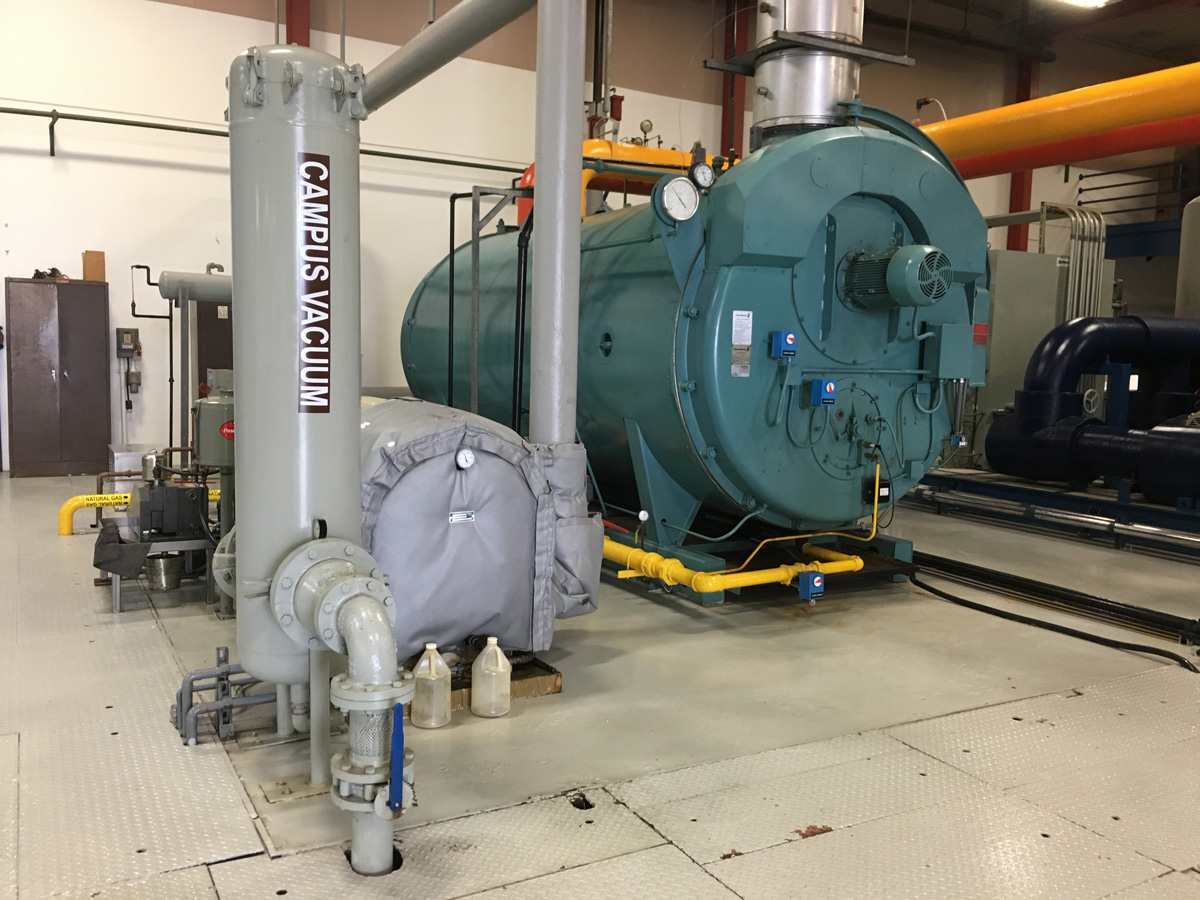By Edgar Uriostegui
Staff Writer
As students and faculty ponder away on the walkways and in the buildings on campus, most are unaware of the labyrinth of tunnels and passageways running underfoot.
Underneath CSUDH, runs a quarter-mile of underground tunnels, leading a system of water-carrying pipes directly to campus buildings. This system was integrated to keep students cool during summer and warm during winter.
On Oct. 12, staff members hosted the fifth-annual Central Plant Open House. The event was held in building 87, the Central Plant, next to the Natural Sciences and Mathematics building. Employees taught attendees about what their technology does and gave group tours of the facility.
Chris Loraditch, a Central Plant employee, explained the closed-loop system.
For cooling, a 1,200-ton absorption chiller takes warm water and cools it through an evaporation process. The reason they’re called “chillers” is because these machines turn hot water into cold. The water circulates through the coils in the air conditioning units and air handlers and makes air conditioning possible.
The boiler that is used for heating water is a 13 million BTU behemoth. Water leaves the boiler at about 160 degrees and returns slightly cooler, about 130 degrees, to be heated again.
In order for the water to reach the individual rooms on campus, building 87 pumps the water through massive pipes beneath the buildings. Once the water has been used in the air conditioning press, it returns to either unit to begin the process again.
“This tunnel here goes all the way down to Old Library, LaCorte Hall and tees off towards the Student Health Center,” Loraditch said. “It’s a lot of walking.”
The recently added LED lights in the tunnels are scheduled to come on only when there’s movement. The lights running in the tunnels and along the campus have saved the university money.
Either way, you don’t want the power to go out while you’re deep in the tunnels.
“So now, when they’re designing these new campuses, they plan ahead to put all the infrastructure in a small channel, with access points at different places. The piping, cabling, wiring, is all condensed,” Loraditch said. “Back in the ‘50s and ‘60s, when they started doing this [construction], material and labor was a lot cheaper. Today, to build something like this would cost millions of dollars, and that doesn’t include construction of the campus yet.”
The smell of sulfur filled a section of the tunnel. Once employees figured out where the smell came from, they determined which specific trade must fix the problem. The reason that Loraditch and other BSEs, or building service engineers, are part of a union. They only can fix things for which they specialize.
“They don’t make these things anymore [in reference to tunnels],” said Loraditch. “There’s only a few campuses that have a tunnel because they’re very expensive to make.”

